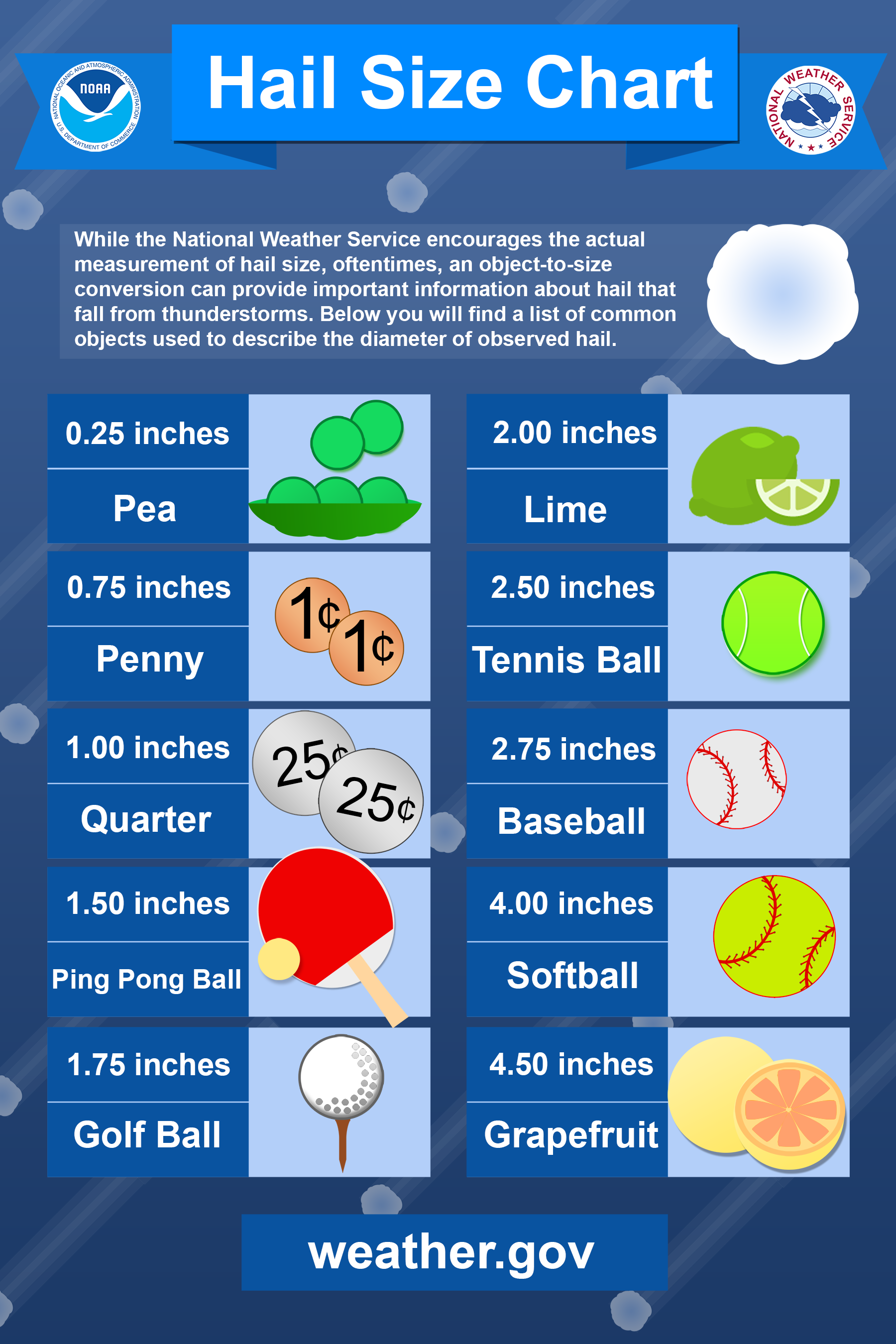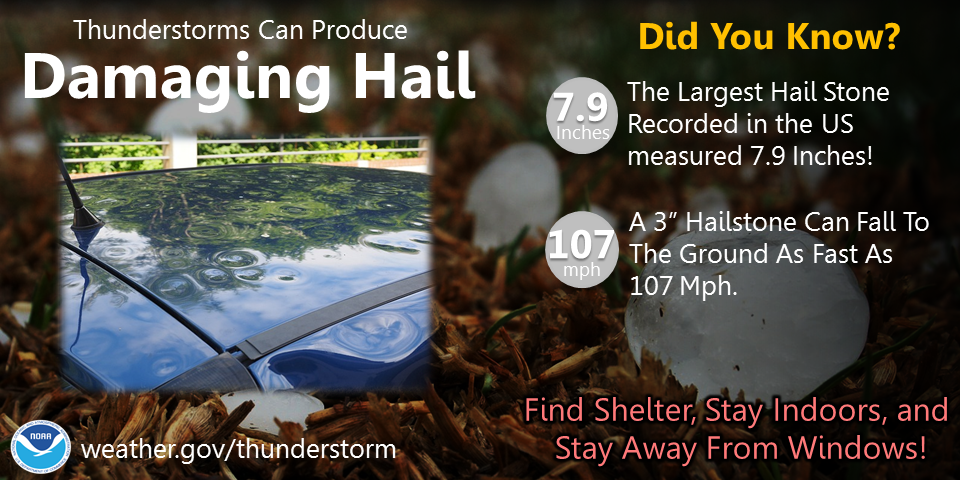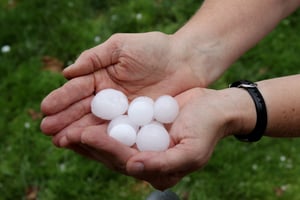When hail hits it has the potential to do more than just dent your car roof it can damage your home or business roof. The damage from a hailstorm varies based on several factors including the severity of the weather conditions, the roofing materials used, and adjacent structures and barriers.
How Does Hail Damage a Roof?
Hail forms when rising air in a storm carries moisture up into extremely cold parts of the atmosphere. This combination causes the raindrops to freeze. The stronger the updraft, the bigger the hailstone and the more potential hail damage to your roof.

Hail damage to shingles usually happens to those that are not rated as Class 4 rated. What is a Class four roof you ask? All shingles and other roofing materials are rated on a scale of 1 through 4 with Class 4 being impact resistant. Most shingles are not impact rated, and those that are Class 4 cost 10-20% than those that are not Class 4 rated.
Many metal roofs are impact-resistant and are rated Class 4 by Underwriters Laboratories (UL).
A Class 4 material is tested when a 2” in diameter steel ball is dropped from 20’ onto the roof. In order to meet the Class 4 specification, it can “show no evidence of tearing, fracturing, cracking, splitting, rupture, crazing or other evidence of opening.”
If your roof is built with lower than Class 4 materials and is hit with a severe hailstorm producing large hailstones you will be at a much greater risk for damage than if you had a Class 4 metal roof. Which makes sense when you consider that a 3" hailstone falls at a speed up to 107 MPH and is falling from a height significantly more than the 20' used for the Class 4 test.

Size and density matter when it comes to hailstones. Edges do too. Hail with irregular shapes and sharp edges have the capacity to inflict more damage than do round ones.
Hail damages shingles by causing a dimple or tear in the material. The surface granules start to come loose which removes protection from the sun and ambient heat. Over time cracks can form in these areas as the shingle further degrades. At some point, water can then start to leak through these cracks.
Identifying Hail Damage from the Ground
 The best way to identify potential roof hail damage from the ground is to look for other damaged items. If your patio furniture, doors, windows, plants, outdoor lighting, or play sets are showing signs of hail damage then it is a sign that there may be roof damage as well. Tree damage with downed branches is another sign that the storm may have inflicted some punishment on your roof.
The best way to identify potential roof hail damage from the ground is to look for other damaged items. If your patio furniture, doors, windows, plants, outdoor lighting, or play sets are showing signs of hail damage then it is a sign that there may be roof damage as well. Tree damage with downed branches is another sign that the storm may have inflicted some punishment on your roof.
Driveway splash marks also signal hail strong enough to move gravel or even the top layers of loose asphalt.
By looking up at the roof (not climbing up on it, please leave that to the pros) you can identify hail damage. Use binoculars or even a drone to take a closer look.
So what does hail damage look like on a roof? Some of the key signs of hail damage to the roof are:
- obvious punctures or missing shingles or tiles
- splits in shingles
- damage to ridge caps, chimneys, and other roof components
- discolored shingles where the surface granules are gone, usually darker or even black in color
- dents if you have a metal roof (though these are almost always cosmetic and not structural in nature)
How to Minimize Hail Damage Risk to Your Roof
Impact resistance is the key measure of resistance to hail and other airborne debris. Companies can’t label something as “hail proof” but the products tested and certified as Class 4 have met the strongest level of impact or hail resistance that UL and the testing has deemed appropriate.
Choosing roofing materials, like metal, that are Class 4 rated reduces the risk of damage after a hail storm or a situation where debris has landed on your roof.
Remember, replacing a roof is not the only expense you will incur when roofing fails. If the hail/debris causes a roof penetration and leads to a leak, additional damage is likely to occur inside. Choosing a Class 4 rated metal system makes your roof far more likely to remain undamaged and free of leaks after hail storms.
You may be interested in these related posts:
About McElroy Metal
Since 1963, McElroy Metal has served the construction industry with quality products and excellent customer service. The employee-owned components manufacturer is headquartered in Bossier City, La., and has 14 manufacturing facilities across the United States. Quality, service and performance have been the cornerstone of McElroy Metal’s business philosophy and have contributed to the success of the company through the years. As a preferred service provider, these values will continue to be at the forefront of McElroy Metal’s model along with a strong focus on the customer.




.png?width=767&name=Metal%20Roofing%20for%20Event%20Centers,%20Arenas%20%20&%20Sports%20Facilities%20(1).png)




Comments on this article:
Scroll down to the bottom to submit a comment and join the conversation. Need help or have a question? Please contact us. Looking for a distributor or contractor? Please click here to get started.